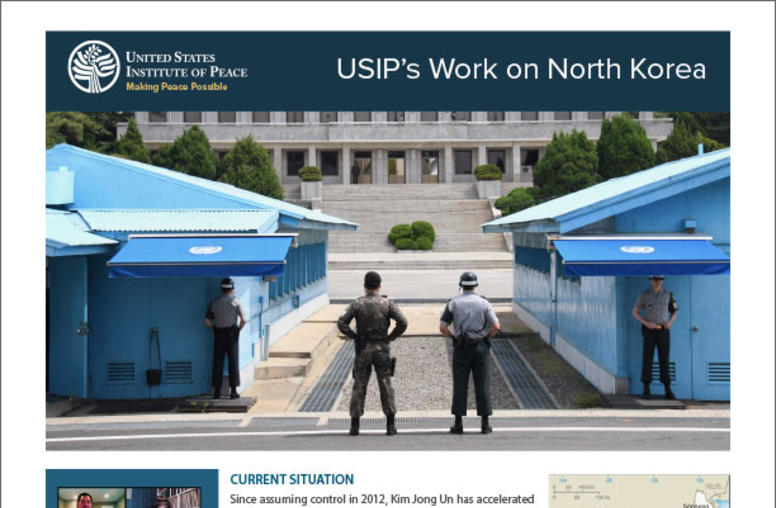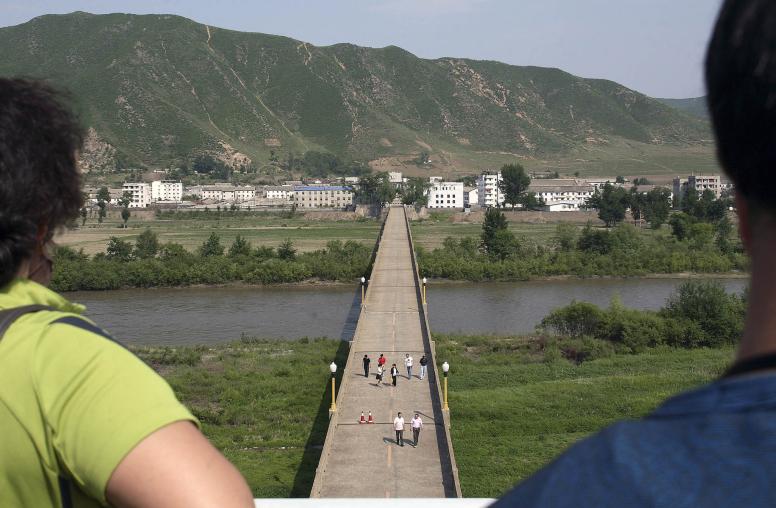Have the Stars Lined Up on North Korea?
Ahead of the Hanoi summit, there are reasons for cautious optimism. Frank Aum explains why.
Tomorrow’s summit between President Trump and Chairman Kim Jong Un represents the best opportunity for peace in the last 20 years. In 2000, the United States came—as former senior Clinton administration official Wendy Sherman described—“tantalizingly close” to achieving an agreement that would halt North Korea’s production, deployment, and testing of long-range missiles. And this was in addition to the 1994 Agreed Framework deal, which froze North Korea’s nuclear facility at Yongbyon. What is different this time around?

There are a couple reasons for this guarded optimism. First, the Trump administration appears to have shifted U.S. policy toward North Korea in a historic and radical way. Successive U.S. administrations over the last 30 years, including the current one early on, had demanded that North Korea denuclearize first before agreeing to discuss peace and normalization of diplomatic ties. Not surprisingly, this policy was unsuccessful—it didn’t make sense to insist the North Korean regime give up its greatest guarantee of security before achieving any assurance of better relations with the United States.
There are a couple reasons for this guarded optimism. First, the Trump administration appears to have shifted U.S. policy toward North Korea in a historic and radical way.
In remarks at Stanford University last month, however, U.S. Special Representative for North Korea Policy Steve Biegun emphasized that the United States is “prepared to pursue—simultaneously and in parallel—all of the commitments our two leaders made in their joint statement at Singapore” in June 2018, which includes developing new U.S.-North Korea relations, working joint toward a lasting and stable peace on the Korean Peninsula, and complete denuclearization.
Further, Biegun clarified that Washington is engaging with North Korea to “see if we can change the trajectory of their policies by changing the trajectory of our own.” This statement was a subtle rejoinder to the intelligence community’s assessment that Kim Jong Un is unlikely to give up his nuclear program. Essentially, Biegun was saying that, while there is good reason to doubt North Korea’s commitment to denuclearization, this position may not necessarily be static and could change over time and with changes in U.S. policy, including the sequencing of peace discussions and the types of incentives we offer to Pyongyang.
Second, Chairman Kim also appears to be demonstrating a greater commitment to going down the denuclearization path and establishing better relations with the United States. As former CIA official Andy Kim, who accompanied Secretary Pompeo in several meetings with Chairman Kim last year, noted in remarks at Stanford on February 25, “We have new players, like President Trump, Chairman Kim Jong Un, and South Korea President Moon, who want to make this work. I can say that the stars have lined up. Personally, based on the last two years of my own engagements as a senior U.S. official with Chairman Kim, his senior officials, as well as key South Korean officials, I have come to believe that we have a great window of opportunity to engage Pyongyang and resolve this long-standing North Korean nuclear issue once and for all.”
Chairman Kim also appears to be demonstrating a greater commitment to going down the denuclearization path and establishing better relations with the United States.
North Korea state propaganda is reinforcing Kim’s commitment to denuclearization, noting that this is an “irreversible decision.” And to hammer this point in a gruesome fashion, Kim appears to be purging senior officials suspected of opposing his outreach to the United States and South Korea.
Of course, all of this is just speculation—we still need to see tangible outcomes from the Hanoi summit. At a minimum, the two leaders must achieve a roadmap that outlines how the denuclearization and peace process will proceed over the next two years, a sustained working level process that can hammer out the details on a consistent basis, and reciprocal concessions from both sides.
The United States should grant partial sanctions relief, an end of war declaration, an end to the travel ban on U.S. citizens going to North Korea, and an exchange of liaison offices. In return, North Korea should provide U.S. and international inspectors access to the Punggye-ri nuclear test site and Dongchang-ri missile engine test site for verification, as well as the verified dismantlement of its Yongbyon nuclear facility. One report suggests that many of these items have already been agreed upon. This package doesn’t mean complete denuclearization or full normalization of ties, but it’s a good first step. The goal is to keep this diplomatic tandem bicycle moving forward.



